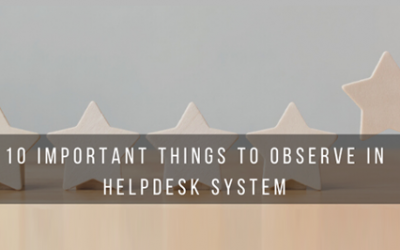Year by year, it is becoming interesting how companies and customers are interacting with each other. Gone are the days when there was only a single channel where customers could make contact with a company. Now, customers can connect with their service provider using any channel, and the credit goes to multi-channel customer support.
The Notable Customer Support Dynamics
With an increase in mobile users, marketers established a wider reach to their audience. However, with increased reach, support difficulties have also increased.
Customers have a mentality that a company’s support is always available – no matter they have contacted the support team in the middle of the night.
Although, a company’s perspective varies a bit. A company sees its support channels as separate individual entities. Some channels like phones are accessible only during day time and ask to leave a message at night. On the other hand channels like email and social media collect the queries 24×7 and will be reverted when agents will be available. This perspective difference leads to poor customer experience.
To avoid such situations companies must adopt a smart Zendesk alternative – true multi-channel customer service strategy.
How to Get Started with Multi-channel Support
1. It’s all about the choice of system
Offer choice to customers, this is something that could help you quickly understand the importance of multi-channel customer service. Customers have the choice of how to contact a company. It is like different types of chocolates in a box – it may not work if you offer only one type of chocolate in the box.
2. Pick channels your customer wants
No need to think which channel you must go for, it’s so simple. Go for the channels your customer wants to use. Though you can’t exactly know what they want, it can become easier with customer surveys.
Channels like phone, email, and social media are generally expected from a company.
3. Consider your every channel as a whole
Irrelevant of the channels you support, it will be all zero if there is no information exchange between them.
There are chances a customer can contact through different channels to obtain updates on their issue. If information is not shared between the channels it requires the customer to explain the whole issue again and again, even when taking updates on the same channel but with different representatives. For sharing customer information, you need to link a CRM system to your customer service channels.
4. Offer the only channels you are good at
It is difficult to have all the tools and manpower to cover all the channels, especially in the initial stage. Thus, begin with the easy channels like phones and emails and then work your way towards the tougher ones. However, live chat and social media support are the most efficient channels, which you can take up further.
5. Centralize the knowledge-guide
A knowledge-guide helps the customer to find a solution that usually an agent would suggest. Many cases will be solved effortlessly when you have a knowledge-guide to answer popular customer questions. Instead of contacting support, they can go for a self-service option.
A knowledge-guide can also work as a knowledge base for representatives. This ensures the right and quick support.
Gradually make the changes. Integrate multiple channels into your support and ensure a good customer service on all of them.
Contact Wowdesk if you want to have the best Zendesk alternative support system. It lets you support every customer no matter which channel they pick. Check more details here.




